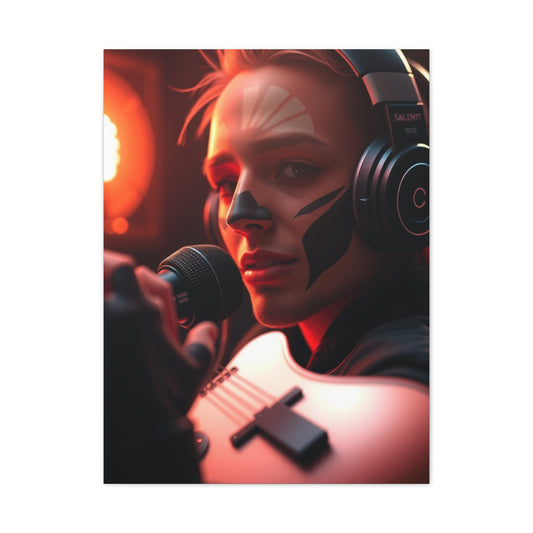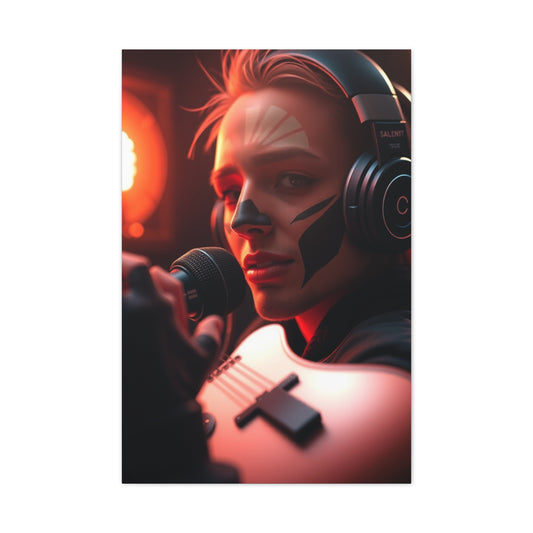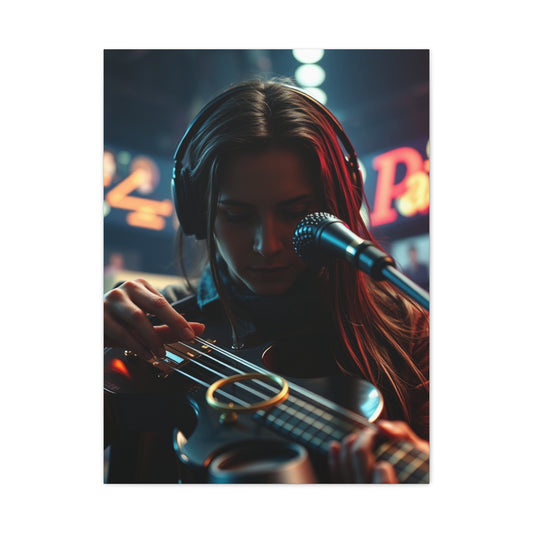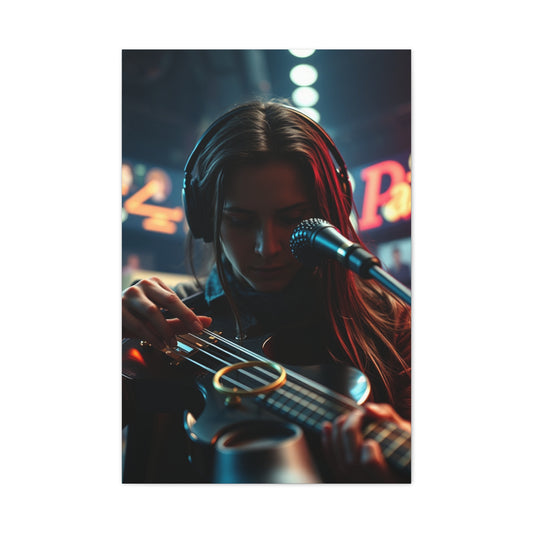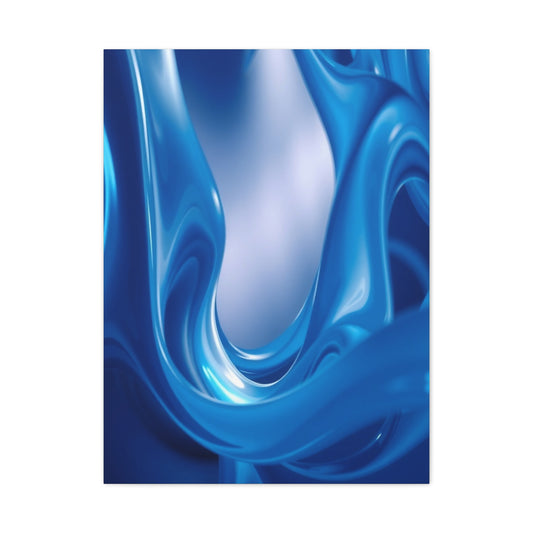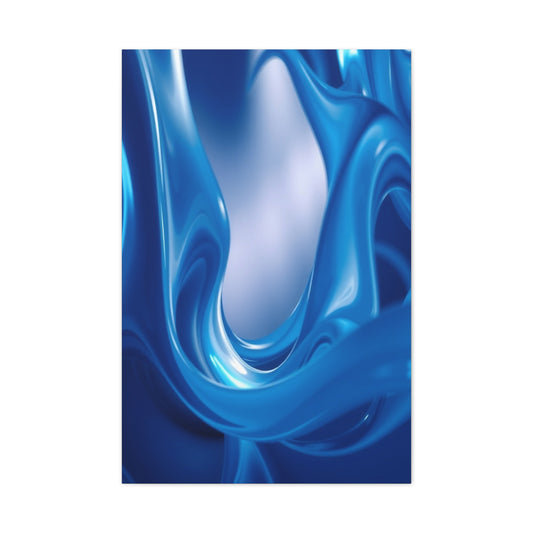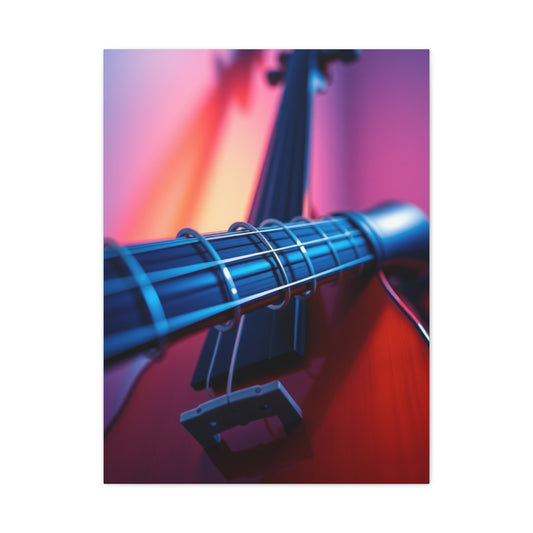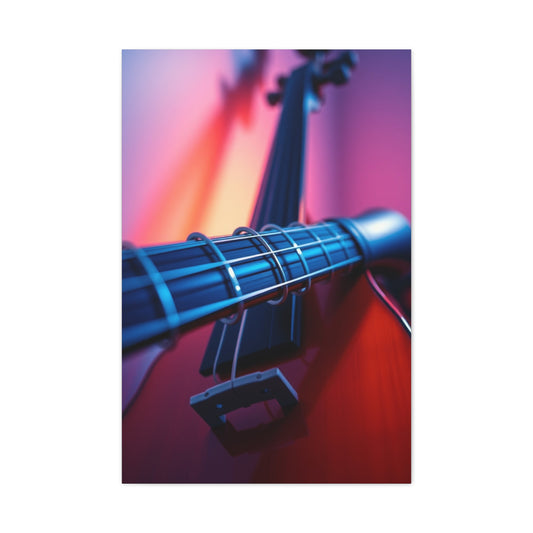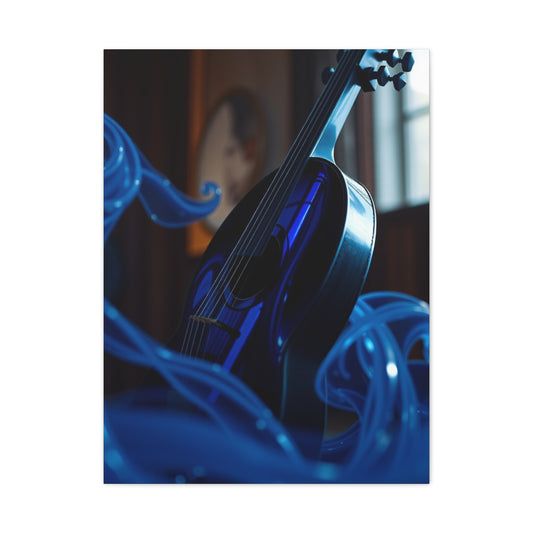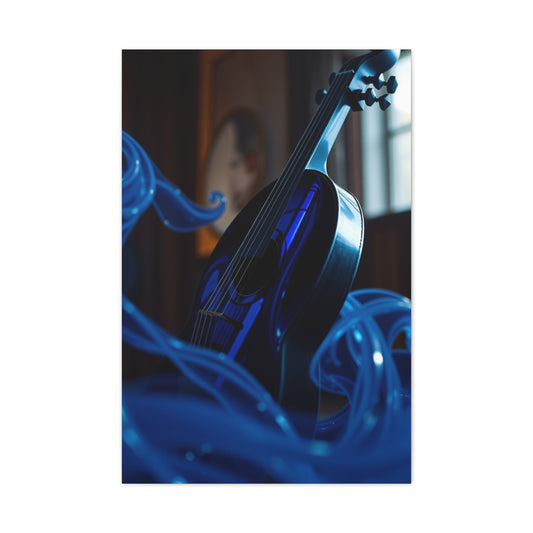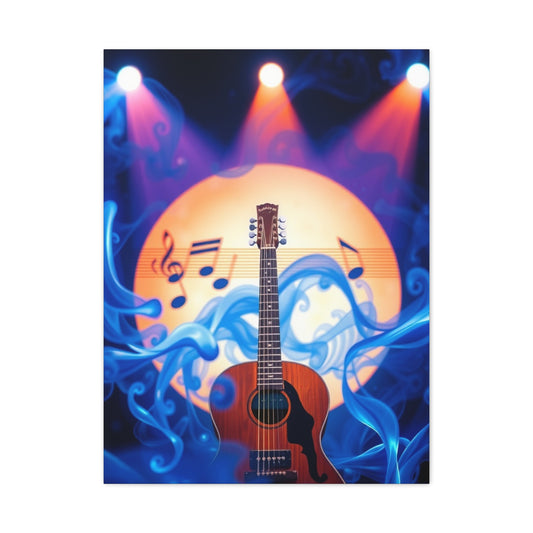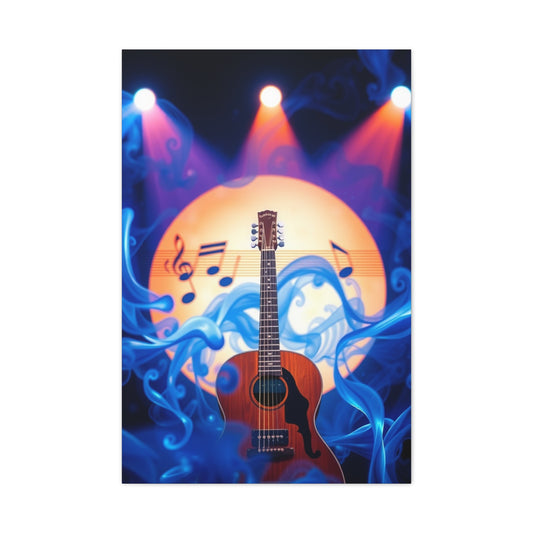Silhouette photography is a striking form of visual storytelling that relies on contrast, shape, and form rather than intricate details. Unlike traditional photography, where texture, color, and fine details often dominate the composition, silhouette photography simplifies the scene, emphasizing the outline of the subject against a brighter background. This technique transforms ordinary subjects into visually compelling images by stripping away distractions, allowing the viewer to focus on the essence of the subject. The simplicity inherent in silhouettes often produces dramatic, evocative, and timeless photographs that communicate emotions and narratives in a direct and powerful way. By reducing subjects to shapes and forms, photographers can create images that are universally readable, visually strong, and emotionally engaging, making silhouette photography a unique and expressive art form.
The essence of silhouette photography lies in its ability to convey meaning through minimalism. A silhouette eliminates internal details, leaving only the contour or shape of the subject visible. This reduction allows the viewer’s imagination to interpret the scene, filling in emotions, expressions, or details that are absent. Human figures, for example, are immediately recognizable even without facial features, allowing for storytelling through posture, gesture, and positioning. Similarly, objects like trees, buildings, or boats can become symbols or abstract shapes that convey mood or context. The power of silhouettes is that they tell a story in the simplest, most visual way possible, often evoking curiosity, intrigue, and emotion. A single dancer against a colorful sunset can evoke grace and elegance, while a lone figure on a hill can convey solitude or introspection. These images leave an impression because they engage the viewer’s imagination and emotions rather than relying on explicit detail.
Lighting is fundamental to creating compelling silhouettes. The core principle is to position the subject between the camera and a bright light source. Natural light, particularly during sunrise or sunset, is ideal because it produces soft, diffused illumination and vibrant background colors. Artificial lights, such as street lamps, studio lights, or backlit windows, can also be used creatively to achieve similar effects in controlled environments. The critical factor is the contrast between the subject and the background: the background must be significantly brighter than the subject to produce a clear, distinct silhouette. Photographers must consider both the direction and quality of light. Direct, strong light can create sharp, well-defined edges, while softer or diffused light can result in more ethereal or abstract silhouettes. Understanding how light interacts with the subject and its surroundings is crucial for controlling the mood, impact, and readability of the image.
Metering correctly is essential for successful silhouette photography. Many photographers mistakenly meter for the subject, which results in a background that is underexposed and a subject that is partially lit, losing the silhouette effect. Instead, the exposure should be set for the brightest part of the scene, such as the sky, to ensure the subject remains dark. Modern cameras offer tools like spot metering, exposure compensation, and histograms to help achieve this balance. Manual mode provides the greatest control, allowing photographers to adjust shutter speed, aperture, and ISO independently to capture the desired effect. Shutter speed can regulate the brightness of the background, aperture controls depth of field and clarity, and ISO ensures minimal noise while preserving the contrast between subject and background. Experimenting with these settings enables photographers to produce silhouettes that range from crisp and sharp to soft and moody, depending on artistic intent.
Composition is another vital aspect of silhouette photography. Since details within the subject are absent, the outline and overall arrangement of elements in the frame become the primary storytelling tools. Subjects should be chosen for their distinct and easily recognizable shapes. For instance, human figures, animals, iconic landmarks, and natural formations are ideal because their outlines are immediately identifiable. Negative space also plays a critical role: empty areas around the subject can enhance the silhouette’s impact, guide the viewer’s eye, and provide balance in the composition. The rule of thirds can be a helpful guideline for positioning silhouettes, ensuring the subject is placed in a visually pleasing manner. Additionally, photographers must avoid clutter or overlapping elements that might confuse the shape of the subject. Every line, curve, and edge contributes to the readability and aesthetic strength of the image, making thoughtful composition a cornerstone of successful silhouette photography.
Timing and location significantly influence the quality and mood of silhouette images. Outdoor settings, such as beaches, mountains, forests, and urban environments, provide endless possibilities for dramatic backdrops and lighting conditions. Golden hour, just after sunrise or before sunset, is favored for its warm, soft, and directional light, which enhances contrast and adds richness to the background. Cloudy skies can diffuse sunlight, creating subtle gradients and softer silhouettes, while clear skies often produce bold, high-contrast images. Scouting locations ahead of time is essential for finding unobstructed sightlines and interesting compositions. Consider how environmental elements, such as water reflections, atmospheric haze, or architectural shapes, interact with the subject to enhance the silhouette’s visual appeal. Flexibility and observation are key: subtle changes in light, shadow, or perspective can transform an ordinary shot into an extraordinary image.
Post-processing is an integral part of refining and enhancing silhouette photographs. Even well-captured images can benefit from adjustments in editing software. Increasing contrast deepens the blacks of the subject and brightens the background, making the silhouette more pronounced. Adjusting saturation and color temperature can enhance the mood of the sky or surrounding environment, from warm golden hues to cool blues or dramatic reds. Minor tweaks to brightness and clarity ensure the silhouette stands out sharply against the background while maintaining the integrity of the scene. Cropping, straightening, and edge refinement can further strengthen composition, removing distractions and emphasizing the silhouette’s shape. The goal of post-processing is to enhance the natural impact of the silhouette, not to overshadow it, preserving the simplicity, drama, and emotional resonance of the original capture.
Silhouette photography also encourages experimentation and creative interpretation. By exploring unconventional angles, reflections, or multiple subjects, photographers can produce unique and engaging images. Motion, for example, can be conveyed through blurred silhouettes, adding energy and dynamism to the composition. Using reflective surfaces such as water or glass can create mirrored silhouettes that double the visual impact. Combining silhouettes with other photographic techniques, such as long exposures or selective lighting, opens up even more possibilities for artistic expression. The simplicity of silhouettes allows photographers to push creative boundaries without overwhelming the viewer, making the genre a playground for both technical mastery and imaginative storytelling.
Understanding silhouette photography requires not just technical knowledge but also an appreciation for the emotional and narrative potential of minimalism. Each silhouette tells a story, whether it’s a fleeting moment of human interaction, a quiet reflection of nature, or an abstract study of shape and form. The viewer is invited to engage actively, imagining the details and emotions that the silhouette implies. This interaction between the photographer’s vision and the audience’s interpretation is what makes silhouettes so compelling. They combine the immediacy of photography with the timelessness of graphic abstraction, producing images that resonate emotionally and aesthetically across a wide range of subjects and contexts.
Mastering silhouette photography is both a technical and creative journey, requiring a deep understanding of light, composition, timing, and post-processing, while simultaneously embracing artistic experimentation and storytelling. At its core, silhouette photography transforms ordinary scenes into visually compelling narratives by emphasizing shape, outline, and contrast rather than relying on intricate details or color. This minimalistic approach allows photographers to distill the essence of a subject, highlighting form and gesture while inviting viewers to engage their imagination and emotions.
The foundation of successful silhouette photography begins with light. Backlighting is crucial, as it illuminates the background while casting the subject into shadow. Photographers must position the subject in front of a strong light source, such as a sunrise, sunset, or artificial illumination, to create a distinct and dramatic outline. The quality, direction, and intensity of the light significantly influence the final image, determining whether the silhouette appears sharp and graphic or soft and ethereal. Metering for the background rather than the subject is a fundamental technique, ensuring that the scene behind the subject is correctly exposed while the foreground subject becomes a pure dark shape. Variations in light conditions, such as the warm glow of golden hour or the cooler tones of twilight, can dramatically alter the mood and emotional resonance of the silhouette. Photographers who carefully observe and adapt to changing light can create images that are not only visually striking but also emotionally compelling.
Composition is another vital element in silhouette photography. Because the subject lacks internal detail, its outline and placement within the frame take on heightened importance. Using compositional principles such as the rule of thirds, leading lines, and negative space helps to create balance and draw attention to the subject. Negative space, in particular, can become a powerful storytelling tool, emphasizing the shape of the subject and adding context without cluttering the frame. Choosing simple and recognizable shapes is essential for clarity; overlapping objects or overly complex forms can confuse the viewer and dilute the visual impact. Photographers must consider both the foreground and background, ensuring that the environment complements and enhances the silhouette without distraction. Careful attention to perspective, scale, and framing allows photographers to guide the viewer’s eye, establishing a narrative that conveys emotion and context through minimal visual cues.
Timing plays a critical role in capturing compelling silhouettes. The fleeting nature of light, particularly during sunrise and sunset, demands preparation and anticipation. Photographers must understand the trajectory of light, weather conditions, and subject movement to capture the perfect moment when the contrast between subject and background is at its peak. Timing is also crucial for dynamic silhouettes, such as capturing motion, interaction, or a fleeting gesture. Whether photographing a person leaping against a glowing sky, a bird in flight, or a tree bending in the wind, precise timing allows the silhouette to convey energy, emotion, and narrative in a single frame. Developing an intuitive sense of timing comes from experience, observation, and a willingness to experiment in diverse lighting and environmental conditions.
Post-processing is an integral part of the silhouette photography workflow, enhancing the drama, clarity, and emotional impact of the image. Even well-composed silhouettes can benefit from adjustments to contrast, brightness, saturation, and color temperature. Increasing contrast deepens the shadows of the subject, creating a more pronounced and striking silhouette, while fine-tuning the background’s brightness ensures the subject stands out sharply. Color adjustments can enhance the atmosphere, adding warmth or coolness to the sky, emphasizing gradients, and heightening the overall mood. Subtle post-processing preserves the integrity of the silhouette while allowing the photographer to convey their intended narrative and emotional tone. Skillful editing ensures that the final image is both visually polished and consistent with the creative vision established during capture.
Creative experimentation and storytelling elevate silhouette photography beyond mere technical execution. Silhouettes inherently evoke mystery and intrigue, inviting viewers to interpret and imagine details not explicitly shown. Photographers can explore motion, reflections, shadows, and abstract forms to add depth and visual interest, transforming ordinary subjects into evocative narratives. For example, a lone figure walking along a shoreline at sunset can convey solitude, contemplation, or freedom, depending on the composition and context. Group interactions, overlapping shapes, or the inclusion of environmental elements can convey relationships, tension, or playful dynamics. Through experimentation, photographers discover new ways to use light, shape, and composition to tell stories that resonate emotionally and intellectually with viewers.
Ultimately, the power of silhouette photography lies in its minimalism and ability to convey emotion, drama, and narrative through simple yet striking visuals. By emphasizing shape, outline, and contrast, photographers can create images that are immediately impactful and timeless. Silhouettes allow for expressive storytelling that transcends the limitations of detail and color, encouraging the viewer to engage actively with the image and interpret its meaning. Whether capturing the graceful curve of a dancer, the majestic outline of a tree, or the playful interaction of people against a vivid sky, silhouettes provide a unique avenue for artistic expression and visual communication.
Mastering silhouette photography requires a harmonious combination of technical skill, creative intuition, and careful observation. Photographers must understand the nuances of light and shadow, refine their compositional instincts, anticipate fleeting moments, and enhance their images thoughtfully in post-processing. By embracing creative experimentation and storytelling, they transform simple outlines into evocative works of art that captivate and inspire. Through attention to detail, careful planning, and a willingness to explore new techniques, silhouette photography allows artists to elevate their visual storytelling, producing images that are both aesthetically compelling and emotionally resonant.
Mastering Lighting and Backlighting for Silhouette Photography
Lighting is the heart of silhouette photography, and understanding how to control, manipulate, and utilize it effectively is crucial for creating compelling images. At its core, silhouette photography relies on strong backlighting to produce a distinct contrast between the subject and the background. Backlighting occurs when the light source is positioned behind the subject, facing the camera. This technique ensures the subject appears dark while the background is illuminated, creating the iconic silhouette effect. Mastering this lighting strategy is essential, as the quality, direction, and intensity of light can dramatically influence the final image.
The ideal natural light for silhouettes often comes from the sun during sunrise or sunset, when the light is low on the horizon. This golden hour light provides soft, warm tones that enhance the background and create pleasing gradients. However, it’s not just about timing; the angle of the light relative to the subject is equally important. Placing the light source directly behind the subject ensures maximum contrast, while slightly offset angles can introduce depth and subtle highlights along the edges of the silhouette. These edge highlights, also known as rim lighting, can define the shape of the subject more clearly and add a three-dimensional quality to the image.
Artificial lighting can also be employed creatively to achieve silhouette effects. Studio strobes, LED panels, or even handheld lights can serve as backlighting sources. When using artificial light, the photographer has full control over the intensity, direction, and color temperature, which allows for experimentation beyond natural conditions. For instance, colored gels on lights can produce dramatic and artistic backgrounds, adding mood or thematic context to the silhouette. The key is ensuring that the subject remains underexposed relative to the light source, preserving the iconic dark shape against a bright backdrop.
Exposure settings play a vital role in controlling silhouette photography. The photographer must meter for the brightest part of the scene, typically the background, rather than the subject. If the camera meters for the subject, it will brighten the silhouette, reducing the contrast and diminishing the intended effect. Using spot metering on the brightest area or manually adjusting exposure settings in the camera ensures that the subject remains dark. Manual mode provides the greatest flexibility, allowing precise adjustments to shutter speed, aperture, and ISO. For instance, a faster shutter speed can prevent overexposure of the background, while a smaller aperture can keep both the subject and the background sharp, depending on the desired depth of field.
In addition to proper metering, photographers can manipulate exposure creatively to achieve different visual effects. Slight underexposure can deepen the silhouette, producing a stronger contrast against the background. Conversely, intentional overexposure of the background can create a washed-out or ethereal effect, softening the edges of the silhouette. Experimenting with exposure compensation allows photographers to fine-tune the balance between subject darkness and background brightness, giving full control over the mood and impact of the image.
Composition in silhouette photography is intrinsically linked to lighting. A well-lit background without sufficient contrast or clarity will weaken the silhouette’s impact. The photographer must consider the shape of the subject, the background’s texture, and the interaction between light and shadow. For instance, a cluttered background can distract from the silhouette, while a clean gradient sky or a reflective water surface enhances the visual impact. Positioning the subject in relation to the light source and the background elements is critical. Using natural features such as the horizon line, mountains, or architectural structures can complement the silhouette and strengthen the narrative of the image.
Reflections and environmental elements provide additional opportunities to enhance silhouette images. Water, glass, or metallic surfaces can reflect light from the background, adding depth and dimension. For example, a figure standing by a lake can have its reflection captured as a secondary silhouette, creating a striking visual effect. Clouds and atmospheric conditions also affect the background lighting, producing dynamic patterns and textures that enhance the overall composition. Photographers must observe the environment closely, adapting positioning and camera angle to maximize the interplay of light, subject, and surroundings.
Post-processing is another powerful tool for refining silhouettes. Adjusting contrast, exposure, and color balance can emphasize the separation between subject and background. Increasing contrast ensures the silhouette remains dark and distinct, while tweaking brightness and saturation of the background can enhance the mood and drama. Subtle use of gradients, vignettes, and selective adjustments can further guide the viewer’s eye, drawing attention to the silhouette and enhancing the narrative impact. While post-processing can elevate an image, it is most effective when combined with careful lighting and compositional planning during the shoot.
Creative experimentation with lighting allows photographers to push the boundaries of silhouette photography. Multiple light sources, unusual angles, or colored backlighting can transform ordinary scenes into unique artistic expressions. Motion can be incorporated by using slower shutter speeds, capturing blurred silhouettes in action, which adds energy and dynamism to the composition. Combining backlighting with foreground elements, such as branches, furniture, or props, can create layered silhouettes, adding complexity and depth. These techniques allow photographers to develop a signature style while maintaining the fundamental principles of silhouette photography.
Finally, understanding the emotional and storytelling potential of backlighting is key. Silhouettes, by their nature, simplify the scene, emphasizing emotion, posture, and movement. A couple embracing against a sunset communicates intimacy, while a lone traveler walking along a ridge conveys solitude and adventure. The direction, intensity, and quality of light not only define the silhouette visually but also shape the mood and narrative of the image. Thoughtful use of backlighting enables photographers to create powerful, emotive imagery that resonates with viewers on a personal and emotional level. Mastering lighting and backlighting is a cornerstone of successful silhouette photography, blending technical expertise, artistic vision, and keen observational skills. At its core, silhouette photography relies on the interplay of light and shadow, using the contrast between a brightly lit background and a darkened subject to emphasize shape, form, and movement. This creates a compelling visual effect that communicates emotion, narrative, and aesthetics without relying on intricate detail or color. Achieving this effect, however, requires a nuanced understanding of how light behaves, how to manipulate it, and how to integrate it seamlessly with composition to tell a story.
Understanding light begins with recognizing its quality, direction, and intensity. In silhouette photography, the primary light source is positioned behind the subject, illuminating the background while leaving the subject in shadow. Natural light, particularly during sunrise and sunset, provides warm, diffused tones that enhance the drama and mood of a scene. These periods, often referred to as golden hours, produce soft gradients, rich color transitions, and balanced exposure that contribute to visually stunning silhouettes. Photographers must observe how the sun’s angle affects shadows, the intensity of backlighting, and the relationship between the subject and background. Artificial lighting can also be employed to achieve similar effects, whether through streetlights, lamps, or studio setups. Understanding the subtleties of these light sources allows photographers to manipulate exposure creatively and maintain control over the final image.
Exposure settings are critical in silhouette photography, as they determine the balance between the darkened subject and the illuminated background. Metering for the background rather than the subject ensures that the backdrop remains bright and detailed while the subject appears as a clean, defined silhouette. Underexposing the subject can be achieved by adjusting shutter speed, aperture, or ISO. A smaller aperture, for example, can increase depth of field, keeping both the subject and background sharp, while a faster shutter speed can help darken the subject and prevent overexposure of the background. Maintaining a low ISO reduces noise, preserving clean edges, and enhancing the contrast between subject and light. Mastery of these settings allows photographers to capture precise silhouettes that are visually striking and technically sound.
Composition in silhouette photography is inseparable from lighting. Since details within the subject are obscured, the shape and placement of the silhouette become paramount. Photographers must carefully consider the outline of the subject, ensuring it is distinct and recognizable. Avoiding overlapping elements, distractions, or complex forms preserves clarity and impact. Negative space is an essential compositional tool, framing the silhouette, emphasizing its form, and enhancing the visual narrative. The rule of thirds, leading lines, and symmetry can further guide the viewer’s eye, creating balance and interest. Photographers who integrate lighting and composition effectively produce images where the subject’s shape communicates mood, story, and context, transforming simple outlines into compelling visual statements.
Creative experimentation enhances the potential of lighting and backlighting in silhouette photography. Photographers can explore unconventional angles, reflections in water or glass, motion blur, and partial silhouettes to add depth, intrigue, and narrative complexity. Positioning the subject at different distances from the light source or background can create layered effects, enhancing dimensionality and contrast. Combining silhouettes with colorful or textured backgrounds—such as clouds, fog, or urban architecture—introduces additional visual interest and emotion. Experimenting with color temperature and gradients during post-processing can further emphasize mood, whether warm, golden sunsets evoke romance and serenity, or cooler twilight tones convey calm or mystery. Through creative exploration, photographers transform ordinary scenes into evocative images, pushing the boundaries of traditional silhouette techniques.
Backlighting is not solely a technical consideration; it is a storytelling device. By controlling how light interacts with the subject and the environment, photographers can communicate emotion, movement, and narrative through minimalistic visual cues. A single figure against a vibrant sky can evoke solitude or contemplation, while multiple interacting silhouettes can convey connection, joy, or tension. The viewer’s imagination is engaged, filling in details and interpreting the story suggested by shapes and light. Backlighting allows the photographer to emphasize gestures, posture, and motion, creating images that resonate emotionally while remaining visually simple. Understanding and employing this principle transforms silhouette photography from a stylistic exercise into a powerful storytelling medium.
Finally, achieving mastery in lighting and backlighting requires patience, observation, and continuous experimentation. Photographers must anticipate changes in natural light, adapt to varying conditions, and be ready to adjust exposure, composition, or positioning on the fly. Observing how shadows shift, how colors evolve, and how the environment interacts with light provides insight into creating compelling silhouettes. The process is iterative: each attempt informs the next, and subtle adjustments can make the difference between a flat image and one that captivates the viewer. Through deliberate practice, photographers learn to harness backlighting as a versatile and expressive tool, transforming ordinary subjects into striking silhouettes that convey elegance, simplicity, and narrative power.
Mastering lighting and backlighting in silhouette photography is a synthesis of technical proficiency, artistic intuition, and observational awareness. By understanding how natural and artificial light shapes the subject, controlling exposure to create crisp outlines, composing with intention, and experimenting creatively, photographers unlock the full potential of silhouettes as a storytelling and expressive medium. Lighting becomes more than illumination; it becomes the language through which shapes, emotions, and narratives are conveyed. Mastery of this art form enables photographers to create images that are visually compelling, emotionally resonant, and timeless, capturing the essence of a scene with simplicity, elegance, and dramatic impact.
Advanced Composition Techniques and Framing for Silhouette Photography
Composition is the backbone of silhouette photography, determining how the viewer perceives the subject, the story, and the emotional impact of the image. Unlike traditional photography, where detail, color, and texture often dominate, silhouettes rely on the strength of shapes, outlines, and spatial relationships. Mastering composition for silhouettes involves deliberate planning, a keen eye for geometry, and an understanding of how negative space, balance, and perspective can transform simple shapes into compelling visual narratives.
The first consideration in silhouette composition is the subject itself. Strong, recognizable shapes are key to creating impactful silhouettes. Subjects with distinctive outlines—such as a lone tree, a dancer in motion, or an animal with an identifiable profile—translate well into silhouettes because the human eye can instantly recognize and interpret the shape. Complicated or cluttered subjects, on the other hand, may lose definition when reduced to dark forms, making the silhouette confusing or unappealing. Photographers should carefully select subjects with clear, clean lines that convey the intended story without relying on color, texture, or detail.
Negative space plays a critical role in silhouette photography. The space surrounding the subject not only isolates and emphasizes the shape but also contributes to the overall mood and balance of the image. A single subject set against a vast, empty sky can evoke feelings of solitude or freedom, while multiple subjects with thoughtfully arranged spacing can create a dynamic scene full of tension or interaction. Paying attention to the relationship between the subject and its surroundings ensures that the composition feels intentional and visually balanced. Negative space is also essential in guiding the viewer’s eye, drawing attention to the silhouette while giving the scene a sense of scale and context.
The rule of thirds remains one of the most effective compositional tools for silhouette photography. Placing the silhouette along one of the intersecting points rather than in the center creates a more dynamic and visually appealing image. For example, positioning a person on the left third of the frame looking toward the right third provides a natural sense of direction and movement, allowing the viewer to follow the implied action. While breaking the rule of thirds can be powerful in some cases, understanding and leveraging this principle helps create visually engaging silhouettes with a strong sense of structure.
Layering and depth add another level of sophistication to silhouette compositions. Including foreground, middle ground, and background elements can enhance the three-dimensional quality of an image. For instance, a silhouette of a person in front of a mountain range with clouds layered behind creates a sense of depth and scale, making the image more immersive. Layering can also be achieved through framing techniques, using natural elements such as tree branches, archways, or windows to enclose the subject and guide the viewer’s attention. This technique enhances the narrative potential of silhouettes, giving context to the scene while maintaining the simplicity and mystery of the subject.
Perspective and camera angle are equally crucial in silhouette composition. Shooting from a low angle can make subjects appear larger and more dominant, enhancing their visual impact. Conversely, a high-angle shot can create a sense of vulnerability or detachment. Side angles, three-quarter views, or diagonal compositions can introduce motion, dynamism, and interest. Experimenting with unusual perspectives often leads to more creative and memorable silhouettes. Photographers should be willing to move around the subject, change heights, and test multiple viewpoints to discover the most striking compositions.
Interaction between multiple subjects provides opportunities for storytelling in silhouettes. Couples, animals, or groups arranged thoughtfully within the frame can communicate relationships, emotions, and narratives without revealing details. Overlapping subjects, for example, can create tension or intimacy, while spacing them apart can convey distance, isolation, or anticipation. Understanding how the placement of each subject affects the composition and emotional impact is essential for creating silhouettes that resonate with viewers.
The use of leading lines and natural guides can enhance silhouette compositions. Roads, fences, rivers, or pathways can draw the eye toward the silhouette, creating a sense of direction and focus. Leading lines help integrate the subject with the environment, making the image feel cohesive and purposeful. Photographers should also consider diagonal or curved lines, which can add movement, rhythm, and elegance to the silhouette, enhancing the visual flow of the image.
Backgrounds in silhouette photography are as important as the subject itself. A gradient sky at sunset, clouds with varying density, or reflections on water can add texture and interest to the background without overpowering the silhouette. Simple, uncluttered backgrounds ensure that the silhouette remains the focal point while adding mood and atmosphere. In some cases, photographers can introduce subtle foreground elements to frame the silhouette further, creating a layered composition that maintains focus and adds depth.
Post-processing can complement compositional choices by fine-tuning contrast, clarity, and saturation. Adjusting contrast ensures that the silhouette remains crisp and distinct against the background. Slightly enhancing colors in the sky or background can create visual interest and enhance the emotional tone without distracting from the subject. Cropping can also refine composition, emphasizing the most important elements and removing distractions, ensuring the silhouette remains central to the story.
Creative experimentation is vital in advancing compositional skills for silhouettes. Combining multiple techniques—such as layering, framing, and negative space—can lead to unique and memorable images. For example, photographing a subject through a window or an arch with the sunset behind creates a silhouette within a silhouette, adding complexity and intrigue. Using reflective surfaces, shadows, or mist can also introduce creative elements that transform ordinary scenes into extraordinary visual narratives.
Finally, understanding the emotional impact of composition is key. Silhouettes convey feelings through shape, posture, and spatial relationships rather than facial expressions or detail. A dancer’s leap, a couple holding hands, or a bird perched on a branch can evoke joy, romance, solitude, or tension based solely on positioning and form. By thoughtfully composing the silhouette, photographers can create images that tell a story, communicate emotion, and engage the viewer on a deeper level.
Mastering advanced composition and framing in silhouette photography requires observation, creativity, and experimentation. Photographers must carefully select subjects with strong, recognizable shapes, use negative space effectively, and position elements within the frame to enhance narrative and emotional impact. By combining principles like the rule of thirds, perspective, layering, leading lines, and thoughtful background choices, photographers can create silhouettes that are not only visually striking but also emotionally compelling and memorable. Through continual practice and experimentation, composition becomes a powerful tool for storytelling, turning simple shapes into evocative works of art that captivate and inspire.
Camera Settings and Exposure Control for Silhouette Photography
Achieving the perfect silhouette begins with understanding and mastering your camera settings. Unlike typical photography, where subjects are illuminated to reveal detail, silhouette photography relies on deliberately underexposing the subject while preserving the brightness and color of the background. This requires a careful balance between exposure, aperture, shutter speed, and ISO to create a striking contrast that transforms ordinary scenes into visually compelling compositions.
Manual mode is the ideal starting point for silhouette photography. By taking full control of the camera’s settings, photographers can ensure precise exposure for both the subject and the background. The key principle is to meter for the light source, usually the sky, rather than the subject. This intentionally underexposes the subject, turning it into a solid black shape, while maintaining the desired brightness and colors of the background. Automatic or semi-automatic modes may struggle to interpret the lighting correctly, often brightening the subject and reducing the silhouette effect.
Aperture selection plays a pivotal role in controlling depth of field and overall sharpness. A smaller aperture (higher f-number) is often preferred to keep both the subject and the background in focus, ensuring that the silhouette remains crisp against the light source. However, photographers may choose a wider aperture (lower f-number) for creative effect, softening the background and creating a sense of separation or dreaminess around the silhouetted subject. The choice of aperture directly impacts how much of the scene is in focus and can be used creatively to emphasize the subject or the background.
Shutter speed is another critical factor. It controls the amount of light hitting the sensor and, consequently, the brightness of the background. A faster shutter speed reduces the light captured, darkening the background and increasing contrast, which can make the silhouette more pronounced. Conversely, a slower shutter speed brightens the background and can introduce motion blur if the subject or environment is moving. Understanding how shutter speed interacts with ambient light allows photographers to manipulate mood, clarity, and drama within their silhouette images.
ISO settings should be kept as low as possible to minimize noise, especially in scenes with subtle gradients in the sky or low-light conditions. High ISO can introduce grain, which may distract from the clean, bold outlines that define a silhouette. Using a tripod can allow for longer exposures at low ISO settings, enabling smooth, noise-free backgrounds and enhanced control over exposure, particularly during sunrise, sunset, or twilight photography.
Exposure compensation is a valuable tool when shooting in semi-automatic modes, such as aperture priority. By dialing in negative exposure compensation, photographers can ensure that the subject darkens sufficiently to create a true silhouette. Experimentation is key, as the optimal compensation may vary depending on the light intensity, angle of the sun, or reflective surfaces in the environment. Bracketing exposures can also be beneficial, capturing multiple versions of the scene at slightly different exposure levels, providing flexibility in post-processing.
Focus is another crucial consideration. Silhouettes rely on clear, recognizable shapes, so the subject must be sharply defined. Manual focus can offer greater precision, especially when shooting against bright light sources that may confuse the camera’s autofocus system. Photographers should focus on the edges of the subject or use focus peaking if available, ensuring that outlines are crisp and distinct. A blurred silhouette can undermine the image’s impact and reduce its ability to convey form and emotion effectively.
White balance may seem less critical in silhouette photography, but it can dramatically influence the mood of the image. Adjusting white balance allows photographers to enhance the colors of the background, creating warmer or cooler tones that complement the story being told. For instance, a warm white balance accentuates the golden hues of sunrise or sunset, while a cooler balance can evoke a more somber or ethereal atmosphere. Shooting in RAW format provides maximum flexibility in adjusting white balance during post-processing, allowing for creative experimentation without compromising image quality.
Using metering modes effectively is essential for silhouette photography. Spot metering, for example, allows photographers to meter directly from a specific point in the background, ensuring that exposure is based on the brightest areas rather than averaging the entire scene. This ensures the subject remains dark while capturing the full range of tones in the background. Evaluative or matrix metering can be useful in some situations, but may require exposure compensation to achieve the desired silhouette effect. Understanding how different metering modes interact with light conditions allows for precise control over exposure and tonal balance.
Lighting direction and intensity should always guide camera settings. Backlighting is fundamental to silhouette photography, but the angle and quality of the light affect exposure choices. Shooting with the sun low in the sky creates long shadows and dramatic contrasts, while higher sun positions require careful adjustment of aperture and shutter speed to maintain strong outlines. Cloud cover, haze, or reflections can alter light intensity, requiring photographers to adapt quickly and re-evaluate exposure settings on the spot.
Bracketing and HDR techniques can also enhance silhouette photography. By capturing multiple exposures and blending them in post-processing, photographers can preserve subtle details in the background while maintaining strong, defined silhouettes. This approach is especially useful in scenes with high dynamic range, such as sunsets with bright skies and darker foreground elements. While HDR must be applied carefully to avoid diminishing the boldness of the silhouette, it can add depth and richness to the background, enhancing the overall visual impact.
Filters, such as graduated neutral density filters, can assist in balancing exposure between the bright background and darker foreground. These filters help prevent blown-out skies while keeping the silhouette dark and defined. Neutral density filters can also facilitate creative long exposures, introducing motion blur in clouds, water, or moving subjects, adding dynamism to the silhouette scene. Understanding how filters interact with exposure and light intensity is essential for advanced silhouette photography.
Continuous evaluation of histograms ensures proper exposure control. By analyzing the histogram, photographers can confirm that the subject is fully underexposed while the background retains tonal range and highlights. Clipping the shadows ensures a solid silhouette, while avoiding blown highlights in the sky preserves background details. Developing the habit of reviewing histograms during shooting allows photographers to make precise adjustments on the fly, ensuring consistently successful results.
Experimentation with different settings is crucial to mastering silhouette photography. No single combination of aperture, shutter speed, and ISO works for every scenario. Varying the distance from the subject, adjusting composition, or changing light angles can necessitate different exposure strategies. Taking multiple shots, experimenting with exposure bracketing, and reviewing results frequently are essential practices to refine technical execution and discover creative possibilities.
Finally, mastering camera settings and exposure control in silhouette photography empowers photographers to transform ordinary scenes into evocative visual stories. Through deliberate underexposure, careful adjustment of aperture, shutter speed, ISO, and white balance, and strategic use of metering modes and filters, photographers can capture clean, dramatic silhouettes with compelling backgrounds. Understanding these technical elements allows for precise artistic expression, ensuring that each image communicates emotion, narrative, and form with clarity and impact.
Post-Processing Techniques to Enhance Silhouettes
Post-processing is an essential phase in silhouette photography, transforming a strong capture into a visually striking, emotionally resonant image. Even perfectly shot silhouettes can benefit from careful editing to enhance contrast, color, and composition, emphasizing the dramatic interplay between the dark subject and its illuminated background. Understanding the post-processing workflow allows photographers to refine their images without compromising the simplicity and mystery that make silhouettes so compelling.
One of the most fundamental adjustments in post-processing is contrast. Silhouette photography relies on the stark separation between the subject and the background, so increasing contrast ensures that the subject remains a solid, unmistakable shape. Using editing software, photographers can deepen shadows to achieve pure black silhouettes while brightening highlights in the background to enhance color vibrancy. The balance must be precise; overdoing contrast can lead to unnatural edges or blown-out areas, while underdoing it may reduce the clarity and visual impact of the silhouette.
Brightness and exposure adjustments play a complementary role. Brightening the background slightly can enhance the warmth and depth of a sunset or sunrise sky, while subtly adjusting the subject’s exposure ensures it remains consistently dark across the frame. Localized adjustments, such as using gradient filters or radial masks, allow for precise control over specific parts of the image. For instance, a sky may benefit from increased brightness and saturation, while the silhouette itself remains untouched, preserving its strong outline.
Color grading is another powerful tool in silhouette post-processing. Adjusting the color temperature can dramatically change the mood of an image. Warm tones can evoke romance, tranquility, or nostalgia, while cooler tones can suggest calmness, isolation, or mystery. Additionally, selective saturation adjustments can make the background sky pop without affecting the black silhouette, drawing viewers’ attention to the interplay of colors behind the subject. Advanced color grading techniques, including split toning or curve adjustments, allow photographers to fine-tune hues and intensities, creating a more dynamic and visually compelling composition.
Sharpening and clarity adjustments can enhance the edges of the silhouette, making the subject more defined against the bright background. Careful application is important, as over-sharpening may introduce halos or noise, particularly around fine details such as hair, tree branches, or intricate architectural elements. Using subtle clarity adjustments can also emphasize textures in the background, such as clouds, water reflections, or landscape details, which adds depth and richness without drawing attention away from the silhouetted subject.
Noise reduction is essential, particularly for shots taken in low-light conditions or at higher ISO settings. Silhouettes often emphasize simplicity, and visible noise can distract from the clean lines and shapes of the subject. Applying noise reduction selectively to the background while preserving the sharp edges of the silhouette maintains the image’s visual integrity. Many post-processing tools offer advanced masking options, enabling precise targeting of noise reduction without affecting crucial elements of the image.
Cropping and composition refinement can further enhance the impact of a silhouette photograph. While composition should be considered during shooting, post-processing allows minor adjustments to framing, alignment, and negative space. Ensuring that the silhouette is positioned in a visually balanced manner, using rules such as the rule of thirds or leading lines, can increase the overall aesthetic appeal. Negative space surrounding the subject is particularly important in silhouette photography, as it emphasizes the form and creates a sense of isolation or drama.
Layering and selective editing can also elevate silhouette images. For example, a photographer might enhance the background sky in one layer while keeping the silhouette untouched in another. This approach allows for maximum flexibility, enabling targeted adjustments that enhance mood and drama without compromising the subject’s shape. Combining multiple layers can also facilitate advanced effects, such as blending different exposures to preserve detail in bright skies while maintaining deep, solid silhouettes.
Dodging and burning, though often associated with traditional portrait or landscape editing, can be subtly applied to silhouettes. Lightly dodging areas of the background can increase brightness and color intensity, making the silhouette stand out more prominently. Conversely, selective burning can deepen shadows or adjust areas of the background that may be too bright or distracting. These nuanced adjustments help guide the viewer’s eye and maintain a harmonious balance between subject and environment.
HDR and exposure blending techniques can also enhance silhouette photography, particularly when dealing with high dynamic range scenes. By merging multiple exposures, photographers can preserve subtle gradients in the sky or highlight details in reflections without losing the integrity of the silhouette. Careful blending ensures that the subject remains dark and defined while the background appears vibrant, creating a balanced and visually striking composition.
Edge refinement tools, such as feathering and masking, are crucial when enhancing silhouettes. Sharp, clean edges are essential for the subject to appear distinct against the bright background. Masking tools allow photographers to isolate the subject accurately, ensuring that adjustments to color, brightness, or contrast affect only the background. Feathering softens transitions between adjustments and untouched areas, maintaining a natural and polished appearance.
Post-processing also offers the opportunity to remove distractions or unwanted elements that may detract from the silhouette’s impact. By carefully retouching small details in the background, photographers can keep the viewer’s focus on the main subject. This could include removing stray objects, smoothing uneven areas, or reducing reflections that compete with the subject. Minimalist editing aligns perfectly with the aesthetic of silhouette photography, where simplicity and clarity are key.
Exporting and output considerations are also part of the post-processing workflow. Choosing the appropriate file format, resolution, and color profile ensures that the final silhouette image maintains its quality across different media, whether digital displays, prints, or social media platforms. Consistency in post-processing workflow and output settings ensures that each silhouette image maintains the desired visual impact and professional standard.
Finally, post-processing is not merely a technical task but a creative extension of the silhouette photographer’s vision. By thoughtfully applying adjustments to contrast, color, brightness, sharpness, and composition, photographers can elevate the emotional resonance and storytelling power of their images. The post-processing stage allows for experimentation, refinement, and the realization of a personal artistic style, transforming simple outlines and shapes into compelling visual narratives that captivate viewers.
Mastering these techniques ensures that silhouette photography moves beyond mere shape recognition to become a medium for emotional expression, artistic storytelling, and visual drama. Combining technical proficiency with creative insight in post-processing allows photographers to enhance the mood, focus, and impact of their images, producing silhouette photography that is both technically polished and emotionally engaging.
Advanced Creative Approaches and Experimental Techniques in Silhouette Photography
Advanced creative approaches in silhouette photography allow photographers to move beyond standard outlines and explore more expressive, experimental, and visually compelling imagery. By combining technical skill, artistic vision, and a willingness to push boundaries, silhouette photography can transcend simple shadow forms and become a powerful medium for storytelling, mood creation, and personal expression. Experimentation encourages innovation, helping photographers discover new ways to captivate viewers while maintaining the simplicity and dramatic essence of silhouettes.
One of the most effective ways to enhance creativity in silhouette photography is through the deliberate use of multiple light sources. While traditional silhouettes rely on a single, strong backlight, adding additional lights or using reflective surfaces can create complex, layered effects. For example, subtle fill lights can illuminate parts of a subject, revealing texture or detail while preserving the overall silhouette. Creative lighting can also introduce colored gels, producing dynamic and unusual silhouettes against vibrant, multicolored backgrounds. This technique transforms a simple silhouette into a more complex and visually arresting image that commands attention.
Motion and movement are powerful tools for experimental silhouettes. Long exposure techniques can create motion blur, transforming the subject into a ghostly or abstract figure while maintaining its recognizable outline. This approach works particularly well with dancers, athletes, or moving objects like birds and vehicles. Motion silhouettes convey energy, flow, and emotion in a way that static images cannot, adding a narrative quality to the photograph. The use of slow shutter speeds requires careful planning and camera stability, but the resulting dynamic forms can dramatically elevate the visual impact of a silhouette image.
Reflections and water surfaces offer another avenue for creative experimentation. Photographing silhouettes near bodies of water allows the photographer to capture mirrored forms, enhancing symmetry and depth. Ripples, waves, or puddles can distort the reflection, introducing abstract and painterly effects. Reflections double the visual interest of an image, creating a more immersive experience for the viewer and reinforcing the central subject. Experimenting with angles and perspectives is crucial here, as subtle changes can dramatically alter the composition and emotional impact of the photograph.
Silhouettes also lend themselves to the exploration of abstract forms. Photographers can focus on unusual shapes, geometric patterns, and architectural elements rather than conventional subjects. By isolating distinct forms against bright backgrounds, abstract silhouettes emphasize the interplay of lines, curves, and negative space. Creative framing, cropping, and perspective shifts can transform ordinary objects into intriguing visual puzzles. These abstract silhouettes invite viewers to interpret and engage with the image on a conceptual level, emphasizing the artistic potential of the medium.
Layering multiple silhouettes in a single composition is another advanced technique. By positioning multiple subjects at varying distances from the camera, a photographer can create a sense of depth and complexity. Foreground silhouettes can remain sharply defined, while background forms are softened or partially obscured by atmospheric conditions such as haze, mist, or fog. Layered silhouettes evoke a narrative or journey, allowing the viewer to explore relationships between subjects, spatial dynamics, and emotional connections. This approach requires careful composition and light management, but it can result in profoundly engaging imagery.
Negative space plays a crucial role in advanced silhouette photography. Beyond simply isolating a subject, the deliberate use of space around the silhouette can guide the viewer’s eye, establish mood, and amplify emotional resonance. Negative space can suggest isolation, freedom, mystery, or tension, depending on the context and composition. Combining negative space with unusual angles, unconventional perspectives, or asymmetrical framing adds sophistication to the image and demonstrates mastery of visual storytelling principles.
Silhouette photography also benefits from creative environmental integration. Using natural elements such as mist, fog, smoke, or atmospheric haze can add texture, depth, and drama to the scene. Environmental factors like weather, clouds, or dust can enhance mood and contrast, transforming a simple silhouette into a scene rich with emotion and atmosphere. Photographers can experiment with backlighting through these elements to create ethereal glows, halos, or diffused light effects that complement the silhouette’s shape.
Experimenting with mixed media is an emerging trend in silhouette photography. By incorporating elements like projected images, patterns, or textured backdrops, photographers can create layered silhouettes that combine photography with graphic design or illustrative techniques. Projecting shapes or patterns onto subjects introduces complexity and visual intrigue, allowing for surreal, artistic, or narrative-driven compositions. These creative experiments push the boundaries of traditional silhouette photography and offer opportunities for unique portfolio work or commercial projects.
Color manipulation and gradient backgrounds can also dramatically alter the emotional impact of silhouettes. Instead of natural skies, photographers can use artificial lighting, gels, or post-processing techniques to introduce gradients, complementary colors, or contrasting hues. These color choices influence mood, draw attention to the subject, and elevate the image from a straightforward silhouette to a visually expressive piece of art. Subtle blending and layering in post-processing ensure that color enhancements remain harmonious and do not overpower the silhouetted form.
Compositional experimentation is essential for advanced silhouette photography. Breaking conventional rules, such as centering the subject or ignoring the rule of thirds, can lead to innovative and visually arresting images. Off-center subjects, unconventional framing, and diagonal lines introduce tension, movement, and focus that captivate the viewer. Combining these compositional risks with lighting, reflections, or motion creates complex and layered imagery that distinguishes professional-level silhouette photography from basic silhouettes.
Another experimental technique involves combining silhouettes with dynamic foreground elements. Photographers can include partial silhouettes of objects, foliage, or architectural structures in the foreground to frame the main subject, creating depth and context. This layering emphasizes the spatial relationship between elements and adds visual intrigue, making the viewer feel part of the scene rather than observing a flat image. Effective foreground integration requires attention to scale, distance, and perspective to maintain the silhouette’s clarity and impact.
Silhouettes are particularly effective for narrative and storytelling photography. By capturing gestures, posture, and positioning, photographers can communicate emotion, intention, or tension without relying on facial expressions or details. Advanced storytelling techniques involve staging the scene, anticipating interactions between subjects, and using visual cues like body language or environmental context to convey meaning. Experimental compositions, including diagonal arrangements, repetition, or symmetry, enhance the narrative dimension and provide viewers with a layered understanding of the scene.
Finally, combining traditional silhouette techniques with modern technology opens new creative horizons. Drone photography, for instance, allows for aerial silhouettes that reveal unique perspectives, patterns, or landscapes invisible from the ground. High-speed photography can freeze motion in mid-air, producing striking action silhouettes that highlight the subject’s form in dynamic contexts. Time-lapse and long-exposure techniques can capture movement, transitions, or changes in light, introducing temporal storytelling into silhouette photography.
Mastering these advanced techniques requires experimentation, patience, and a willingness to embrace unpredictability. Photographers must be attentive to light, composition, environmental conditions, and creative vision, balancing technical precision with artistic intuition. The ability to adapt, experiment, and refine approaches allows silhouette photography to evolve beyond simple outlines, becoming a versatile medium for artistic expression, emotional impact, and professional portfolio development.
Ultimately, experimental and advanced silhouette photography demonstrates how creative vision, technical expertise, and innovative thinking converge to produce images that are visually arresting, emotionally resonant, and uniquely memorable. By pushing boundaries and exploring new approaches, photographers can create silhouettes that not only depict form but also evoke story, mood, and imagination, cementing silhouette photography as a powerful tool in the visual storytelling arsenal.
Conclusion
Silhouette photography is a unique and powerful medium that combines technical mastery with artistic vision to create visually striking and emotionally resonant images. Across all aspects of the craft, from understanding the fundamentals of light and shadow to experimenting with advanced techniques, the essence of silhouette photography lies in its simplicity and the ability to convey narrative through shapes, outlines, and contrast. By focusing on the interplay between subject and background, photographers are able to strip away distracting details and allow the viewer’s imagination to engage with the image, resulting in a more evocative and memorable visual experience.
Mastering lighting is foundational to effective silhouette photography. Proper backlighting ensures that the subject is rendered in dark contrast against a bright background, creating a clear, dramatic outline. Photographers must carefully evaluate the direction, intensity, and quality of light to achieve the desired effect, whether it is a warm golden-hour glow, a vibrant sunset, or a cool twilight scene. Exposure techniques, such as metering for the background rather than the subject, provide control over brightness and contrast, allowing silhouettes to maintain clarity while emphasizing form and shape. Attention to lighting conditions empowers photographers to capture the subject with precision while setting the mood and tone of the photograph.
Composition plays an equally critical role in silhouette photography. The careful arrangement of elements within the frame, the use of negative space, and the application of compositional rules like the rule of thirds or leading lines contribute to the overall visual impact. Silhouette photography often relies on simplicity and recognizability of forms, so isolating the subject and avoiding overlapping elements are essential. Thoughtful composition ensures that the viewer’s attention is guided effectively, enhancing the storytelling potential of the image. By considering perspective, scale, and framing, photographers can elevate silhouettes from simple visual outlines to compelling narratives that communicate emotion and context.
Advanced techniques and creative experimentation further expand the possibilities of silhouette photography. Incorporating motion, reflections, abstract forms, layered subjects, and environmental elements allows photographers to push the boundaries of traditional silhouette imagery. Motion blur, long exposures, and high-speed captures introduce dynamism, while reflections and symmetry add depth and visual interest. Abstract compositions and unusual shapes challenge the viewer’s perception and encourage engagement with the image on a conceptual level. By experimenting with color gradients, projected patterns, and mixed media, photographers can create distinctive silhouettes that stand out and convey artistic intention.
Post-processing is a critical component of the silhouette photography workflow. Editing software enables photographers to refine contrast, adjust brightness, enhance color, and subtly manipulate backgrounds to maximize the impact of the silhouette. Careful adjustments maintain the balance between realism and artistry, ensuring that the silhouette remains the focal point while the surrounding environment complements and enhances the visual story. The post-processing phase allows for creative control over the mood, tone, and emotional resonance of the final image, reinforcing the photographer’s artistic vision and ensuring consistent, polished results.
Moreover, silhouette photography excels in its ability to convey emotion, narrative, and symbolism without relying on intricate details. By focusing on posture, gesture, and interaction, photographers can communicate relationships, intimacy, tension, or joy. Silhouettes allow for universal storytelling, as viewers fill in the missing information with their own interpretation, creating a personal and engaging experience. This abstract approach to portraiture, landscapes, and conceptual photography offers a unique avenue for self-expression, creative exploration, and professional differentiation.
Finally, mastering silhouette photography requires a combination of technical skill, creative experimentation, and deliberate planning. Photographers must be attuned to the nuances of light, form, composition, and environment while remaining flexible and adaptive to changing conditions. By embracing both foundational techniques and innovative approaches, photographers can produce images that are visually compelling, emotionally engaging, and artistically sophisticated. Silhouette photography, when approached with intention and creativity, transforms ordinary subjects into extraordinary works of art that resonate with viewers and stand the test of time.
The power of silhouette photography lies in its simplicity, versatility, and ability to evoke imagination. From the careful selection of light and composition to advanced experimentation and post-processing refinement, each step contributes to creating images that are more than mere photographs—they become narratives, expressions of emotion, and visually striking interpretations of the world. For photographers seeking to elevate their craft, mastering silhouette photography offers a unique and rewarding avenue to combine technical expertise with artistic storytelling, resulting in timeless imagery that captivates, inspires, and endures.










